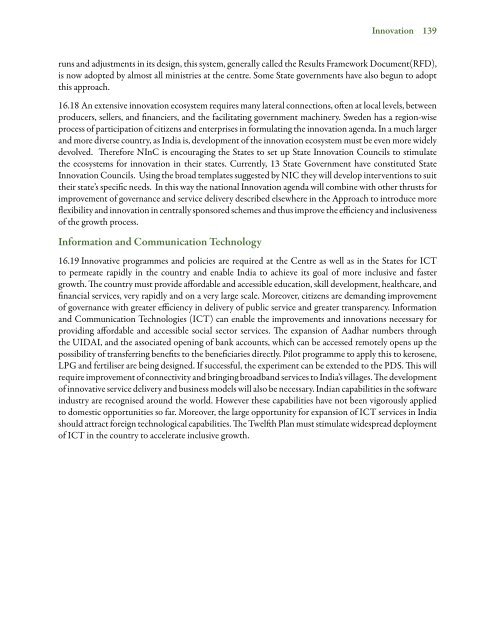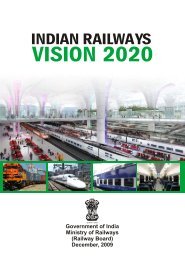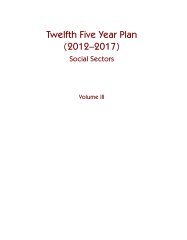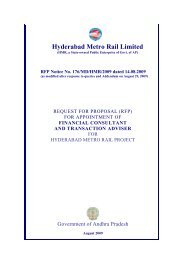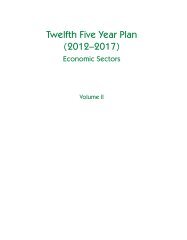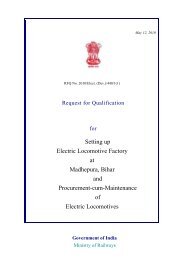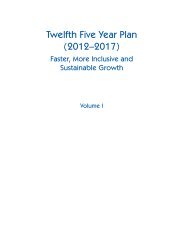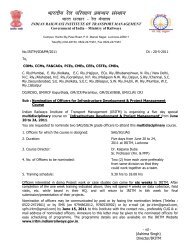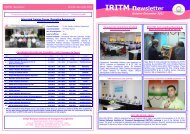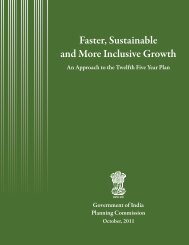Approach 12 FYP - Indian Railways Institute of Transport Management
Approach 12 FYP - Indian Railways Institute of Transport Management
Approach 12 FYP - Indian Railways Institute of Transport Management
Create successful ePaper yourself
Turn your PDF publications into a flip-book with our unique Google optimized e-Paper software.
Innovation 139<br />
runs and adjustments in its design, this system, generally called the Results Framework Document(RFD),<br />
is now adopted by almost all ministries at the centre. Some State governments have also begun to adopt<br />
this approach.<br />
16.18 An extensive innovation ecosystem requires many lateral connections, <strong>of</strong>ten at local levels, between<br />
producers, sellers, and financiers, and the facilitating government machinery. Sweden has a region-wise<br />
process <strong>of</strong> participation <strong>of</strong> citizens and enterprises in formulating the innovation agenda. In a much larger<br />
and more diverse country, as India is, development <strong>of</strong> the innovation ecosystem must be even more widely<br />
devolved. Therefore NInC is encouraging the States to set up State Innovation Councils to stimulate<br />
the ecosystems for innovation in their states. Currently, 13 State Government have constituted State<br />
Innovation Councils. Using the broad templates suggested by NIC they will develop interventions to suit<br />
their state’s specific needs. In this way the national Innovation agenda will combine with other thrusts for<br />
improvement <strong>of</strong> governance and service delivery described elsewhere in the <strong>Approach</strong> to introduce more<br />
flexibility and innovation in centrally sponsored schemes and thus improve the efficiency and inclusiveness<br />
<strong>of</strong> the growth process.<br />
Information and Communication Technology<br />
16.19 Innovative programmes and policies are required at the Centre as well as in the States for ICT<br />
to permeate rapidly in the country and enable India to achieve its goal <strong>of</strong> more inclusive and faster<br />
growth. The country must provide affordable and accessible education, skill development, healthcare, and<br />
financial services, very rapidly and on a very large scale. Moreover, citizens are demanding improvement<br />
<strong>of</strong> governance with greater efficiency in delivery <strong>of</strong> public service and greater transparency. Information<br />
and Communication Technologies (ICT) can enable the improvements and innovations necessary for<br />
providing affordable and accessible social sector services. The expansion <strong>of</strong> Aadhar numbers through<br />
the UIDAI, and the associated opening <strong>of</strong> bank accounts, which can be accessed remotely opens up the<br />
possibility <strong>of</strong> transferring benefits to the beneficiaries directly. Pilot programme to apply this to kerosene,<br />
LPG and fertiliser are being designed. If successful, the experiment can be extended to the PDS. This will<br />
require improvement <strong>of</strong> connectivity and bringing broadband services to India’s villages. The development<br />
<strong>of</strong> innovative service delivery and business models will also be necessary. <strong>Indian</strong> capabilities in the s<strong>of</strong>tware<br />
industry are recognised around the world. However these capabilities have not been vigorously applied<br />
to domestic opportunities so far. Moreover, the large opportunity for expansion <strong>of</strong> ICT services in India<br />
should attract foreign technological capabilities. The Twelfth Plan must stimulate widespread deployment<br />
<strong>of</strong> ICT in the country to accelerate inclusive growth.


